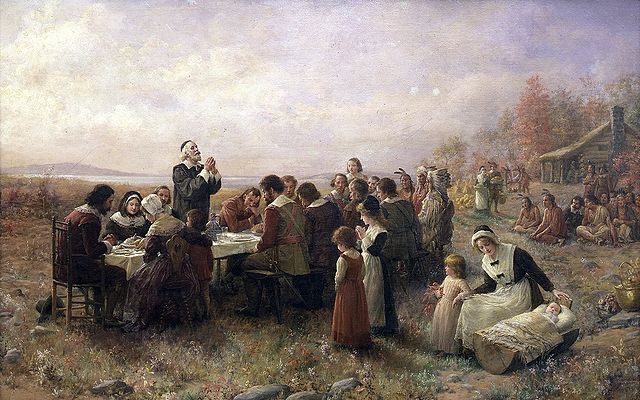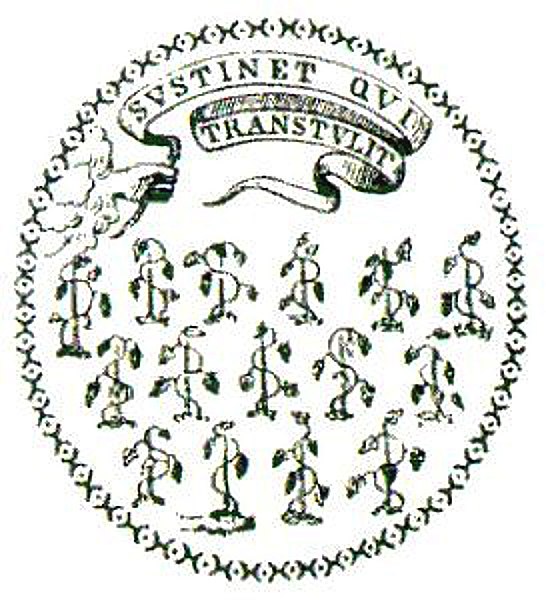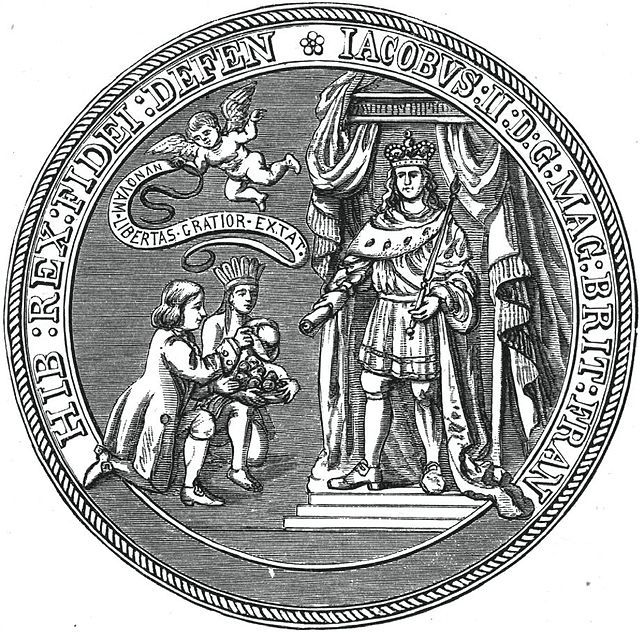Plymouth Colony was the first permanent English colony in New England from 1620 and the third permanent English colony in America, after Newfoundland and the Jamestown Colony. It was settled by the passengers on the Mayflower at a location that had previously been surveyed and named by Captain John Smith. The settlement served as the capital of the colony and developed as the town of Plymouth, Massachusetts. At its height, Plymouth Colony occupied most of the southeastern portion of Massachusetts. Many of the people and events surrounding Plymouth Colony have become part of American folklore, including the American tradition of Thanksgiving and the monument of Plymouth Rock.
The cover of John Smith's A Description of New England, published in 1616, which was the first text to use the name "New Plymouth" to describe the site of the future colony
Interview of Samoset with the Pilgrims, an 1852 book engraving
"Signing of the Mayflower Compact" by Edward Percy Moran, c. 1900
The First Thanksgiving at Plymouth, a 1914 portrait by Jennie Augusta Brownscombe that is now housed in Pilgrim Hall Museum in Plymouth, Massachusetts
The New England Colonies of British America included Connecticut Colony, the Colony of Rhode Island and Providence Plantations, Massachusetts Bay Colony, Plymouth Colony, and the Province of New Hampshire, as well as a few smaller short-lived colonies. The New England colonies were part of the Thirteen Colonies and eventually became five of the six states in New England, with Plymouth Colony absorbed into Massachusetts and Maine separating from it.
Image: State CT Original Seal
Image: State CT Original Seal
Image: Seal of the Dominion of New England






